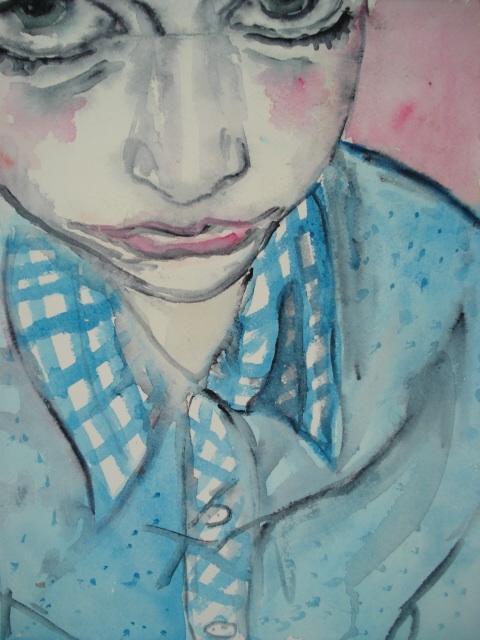To see what I mean, turn down the Gershwin soundtrack Jacobs played on the runway, start up a bass-heavy Haitian beat!


I like the use of pop-blue to allow the young and fair to carry off a Black Renaissance look as well.

And the colors don't always have to be emerald-greens, oranges, or browns (you can almost picture the stylists at some shows saying, "ooh, let's put that on the black model!") to look good on non-Eastern European models. Here, of course, it still works on that type of model too - an adaptability that explains Jacob's commercial success. For me, this jumped out of the movie set of "Bride and Prejudice," a Bollywood take on Jane Austen from a few years back (I love how he achieves this with just the structure of the dress, not overkilling it with a subcontinental print). And I'd recommend it for so many of my woman friends who fear they have to look washed-out and wasted-frame to draw eyes like the female lead in a romantic movie.
I'll show a few Jacobs Steampunk shots here.



Don't get me wrong, there is a healthy direction to what he's doing here. Steampunk was a great way to save the best of the back-to-the-land movement when it became cheapened and orthodox on the streets of Williamsburg and the Sodermalm. It saved the individuality, handicraft, and ideals of DIY with a bit of comic-book flash, that Jacobs shows here in dashes of bright yellow and red. I'm also guessing that Jacobs watched coverage of the police raid on the Yearning for Zion polygamist ranch in Texas this past spring, and was fascinated like many of us with the women's throwback hair and dress. However, a source of fascination is not always worthy of aesthetic emulation. I suppose another benefit of the trend, though, is it allows you to play dress-up with a seemingly new level of immunity from caricature. Thus, in the first photo, on a day when you imagine yourself plunged into the moors while running heartbroken along a Prince Edward Island coastline, like a modern-day Anne of Avonlea, or even if you're just convinced your body has been possessed by the haunted soul of Strawberry Shortcake, take heart: no one will accuse you of costume drama. Just the fashion kind. And fashion drama, in my book, when executed well and sincerely, is never bad.
Peter






No comments:
Post a Comment